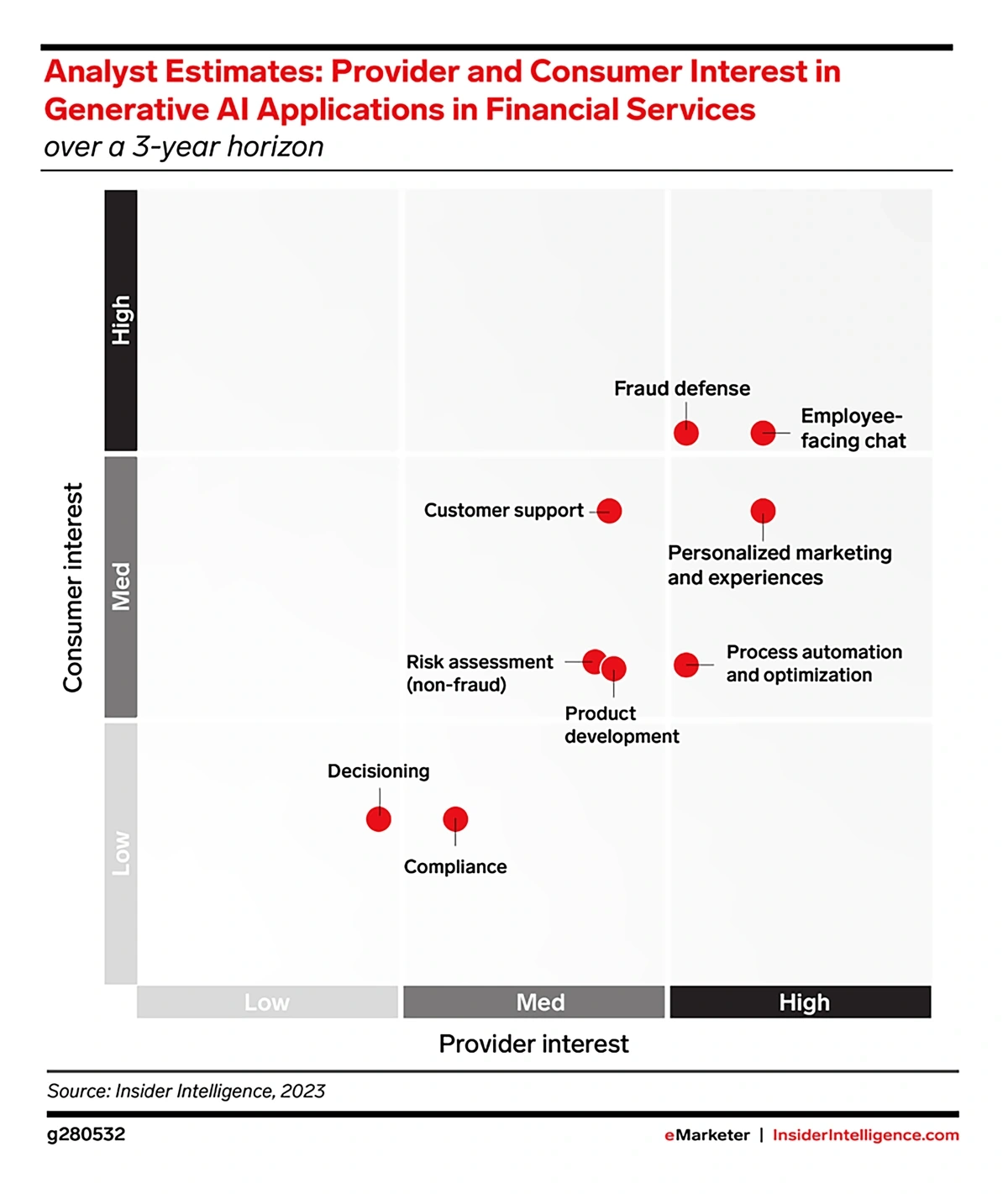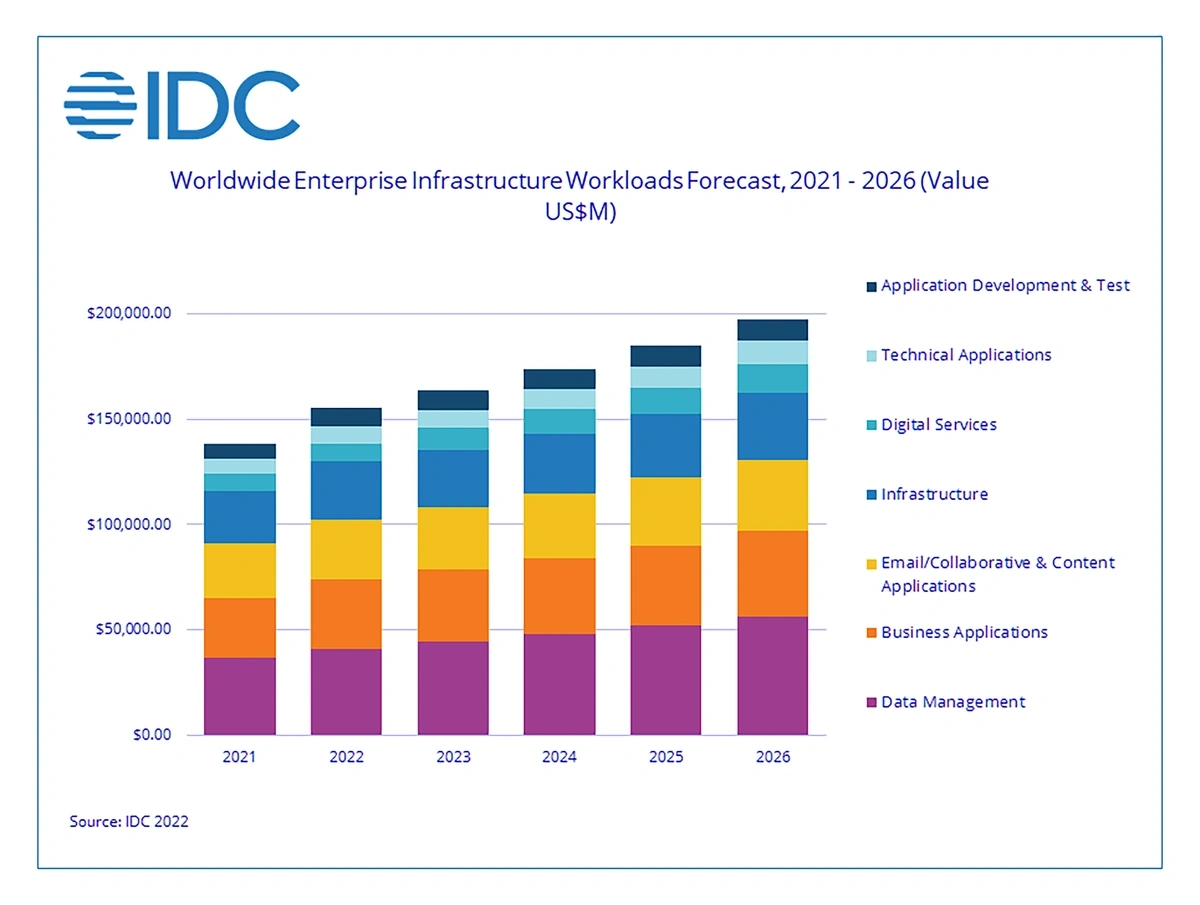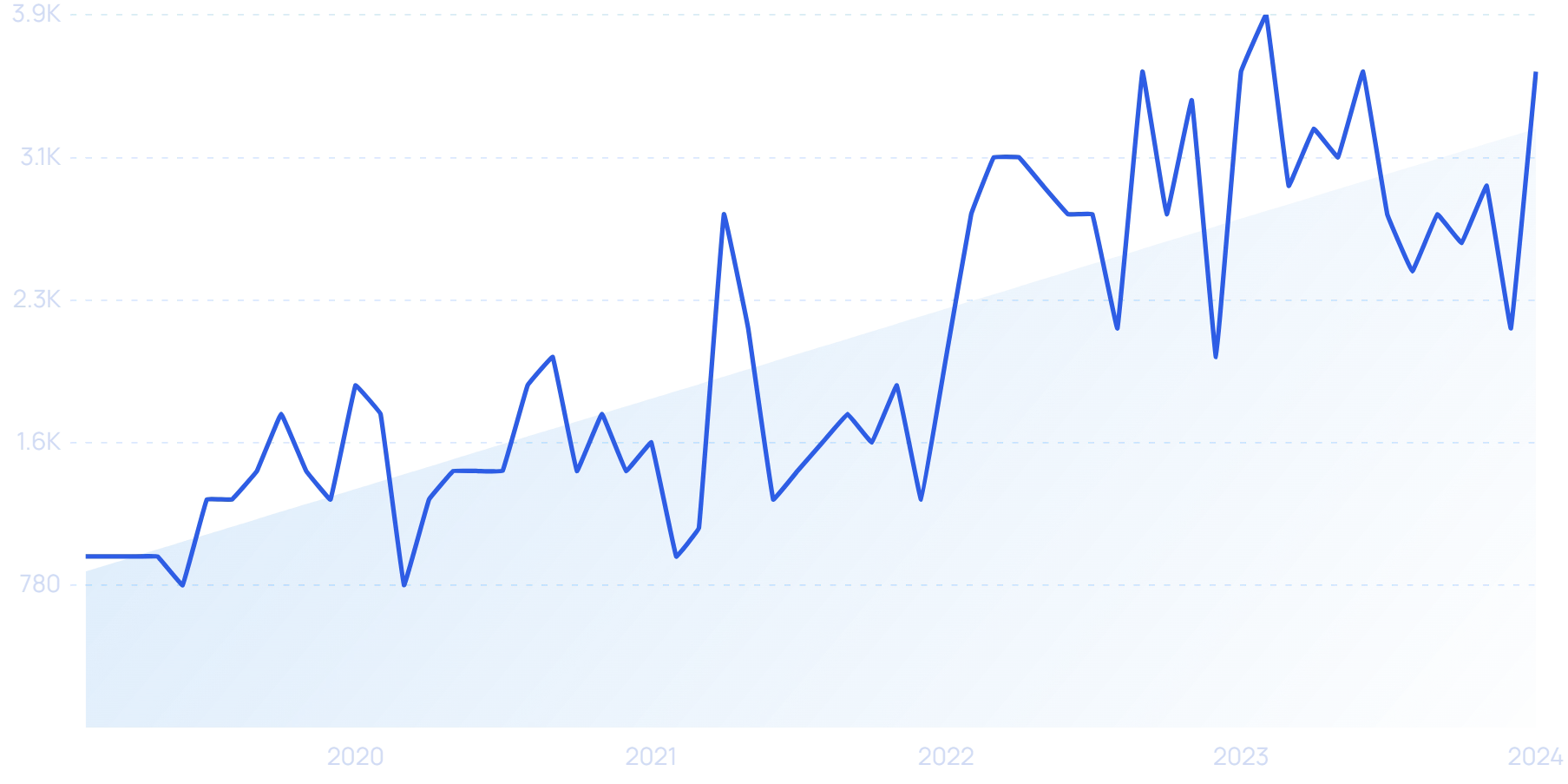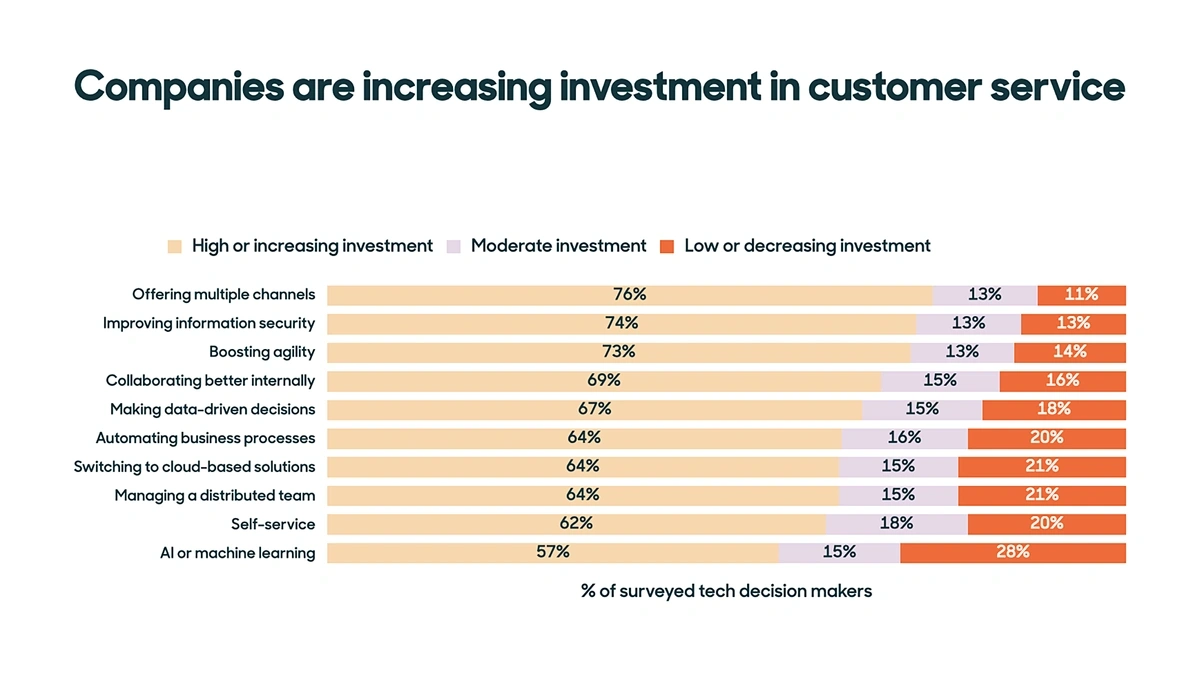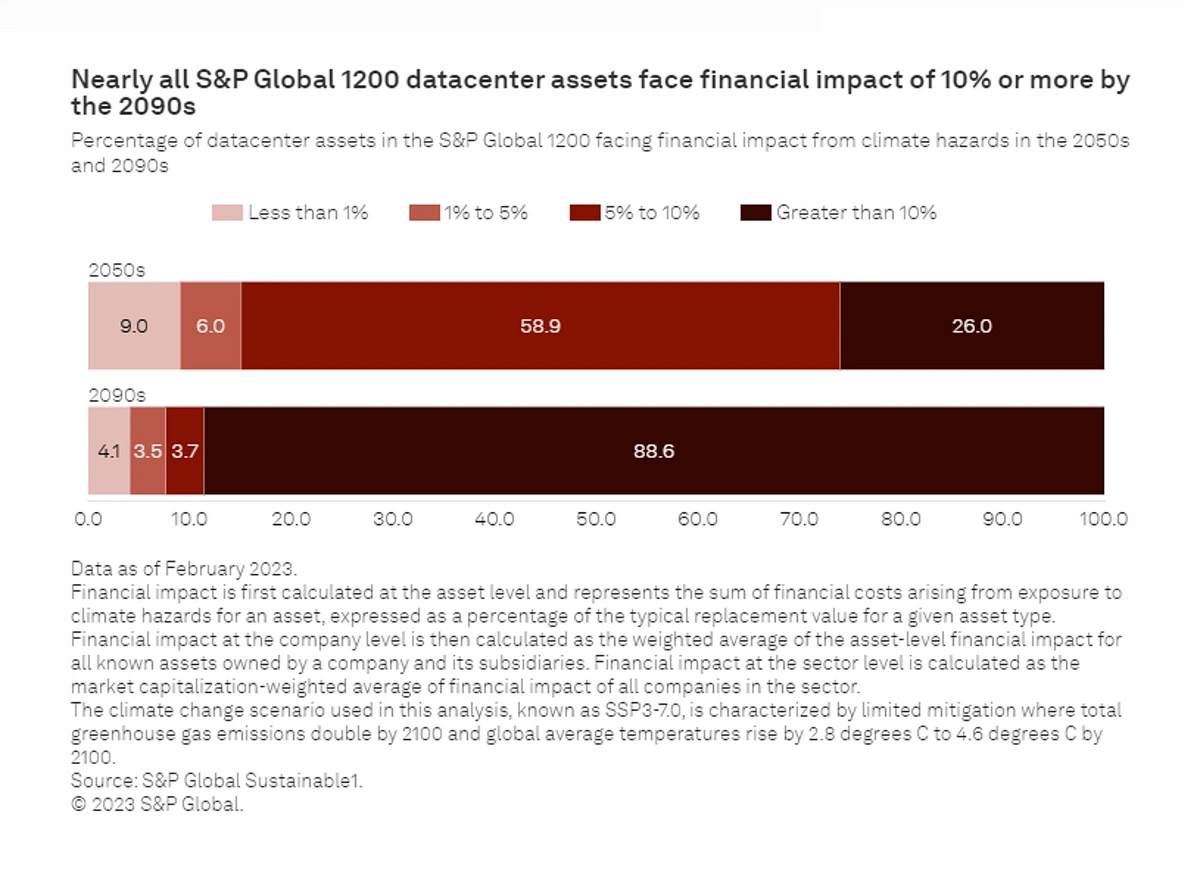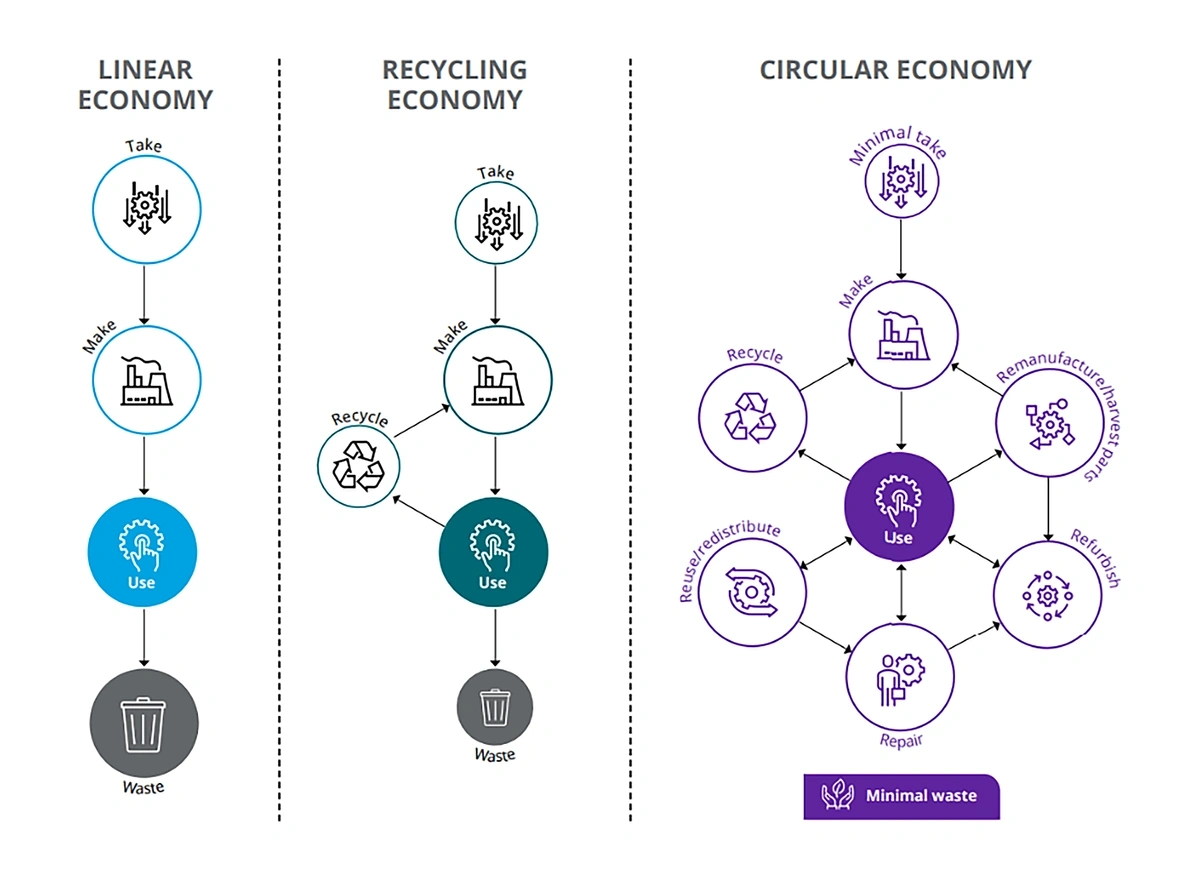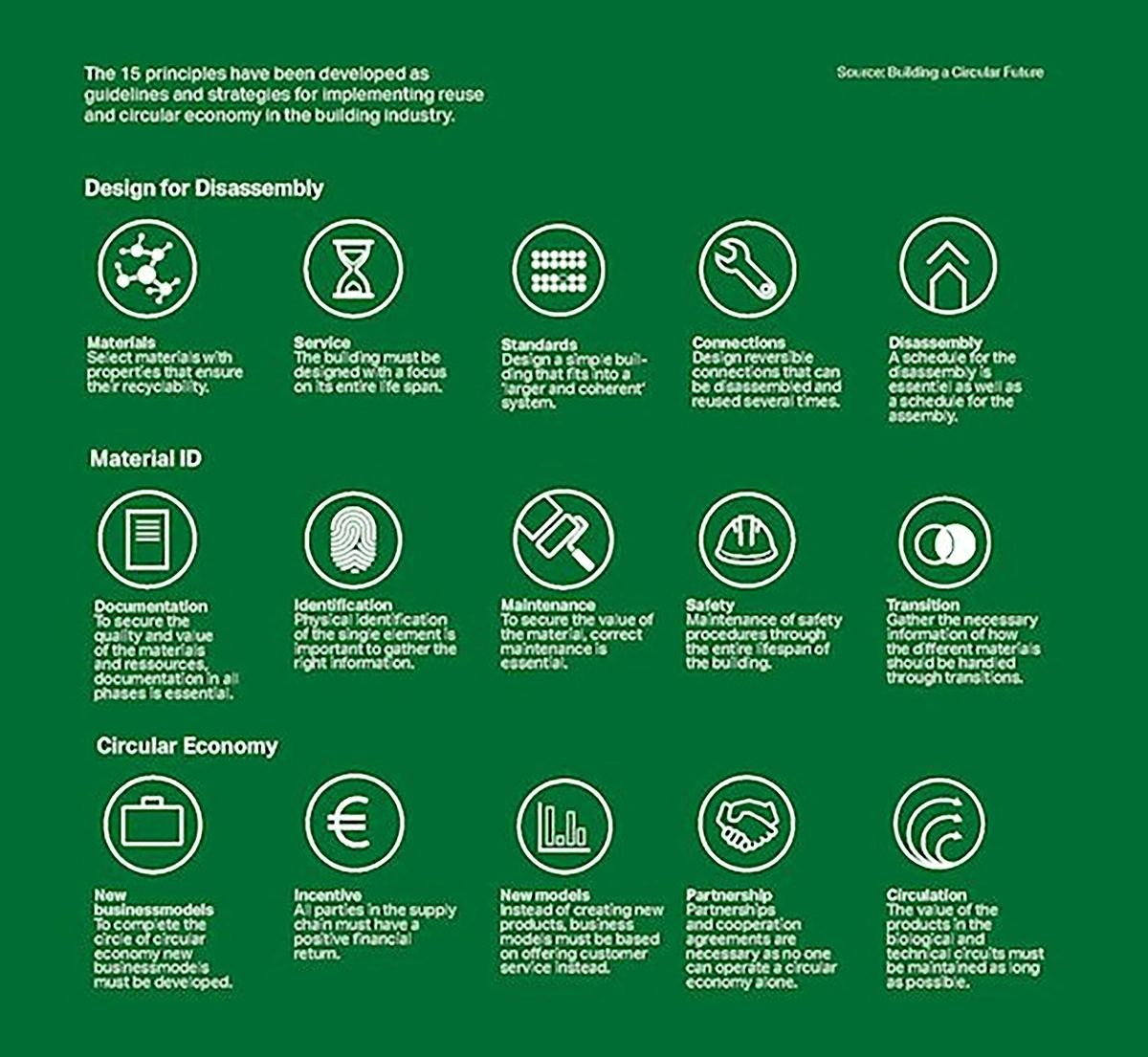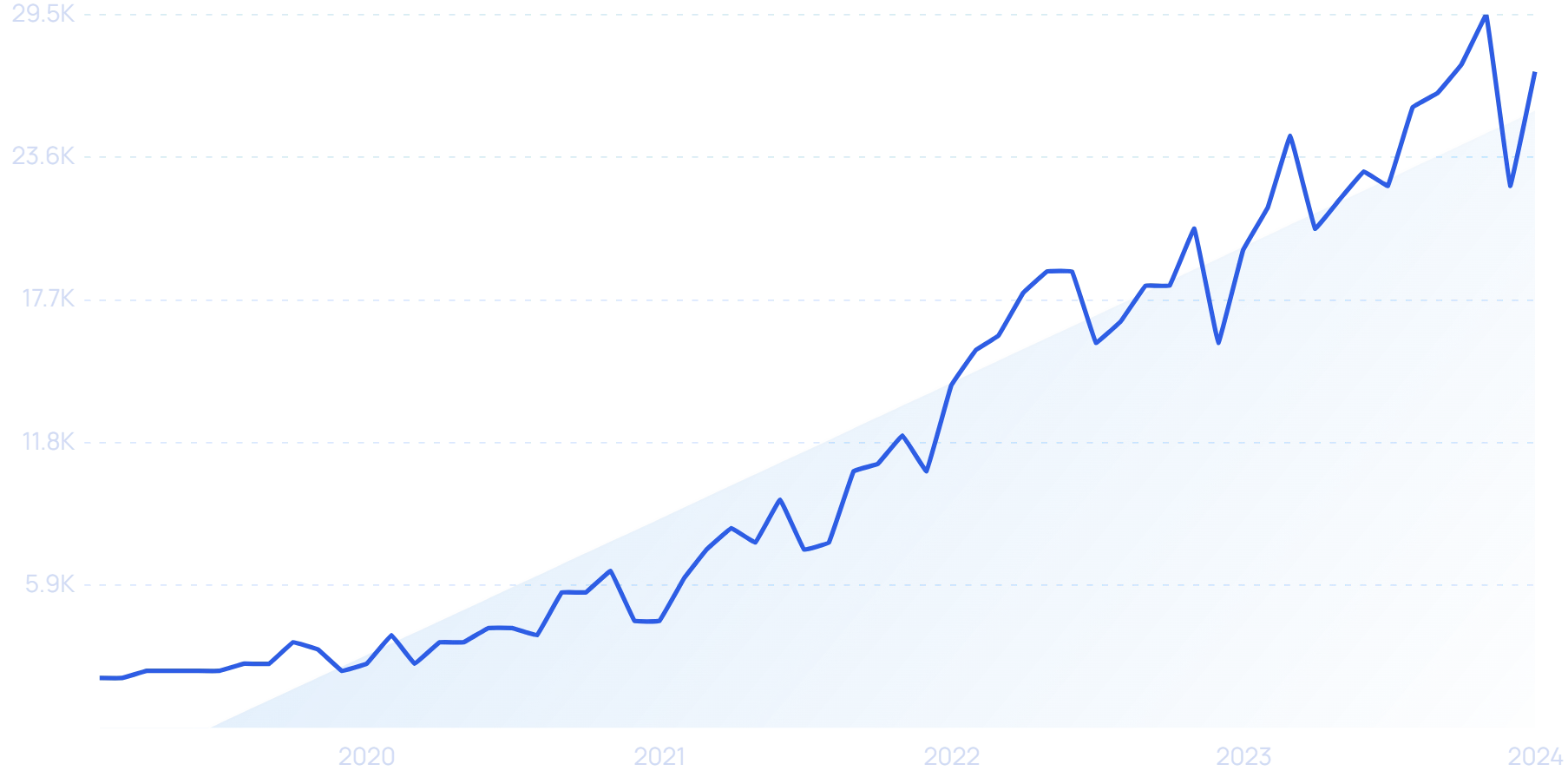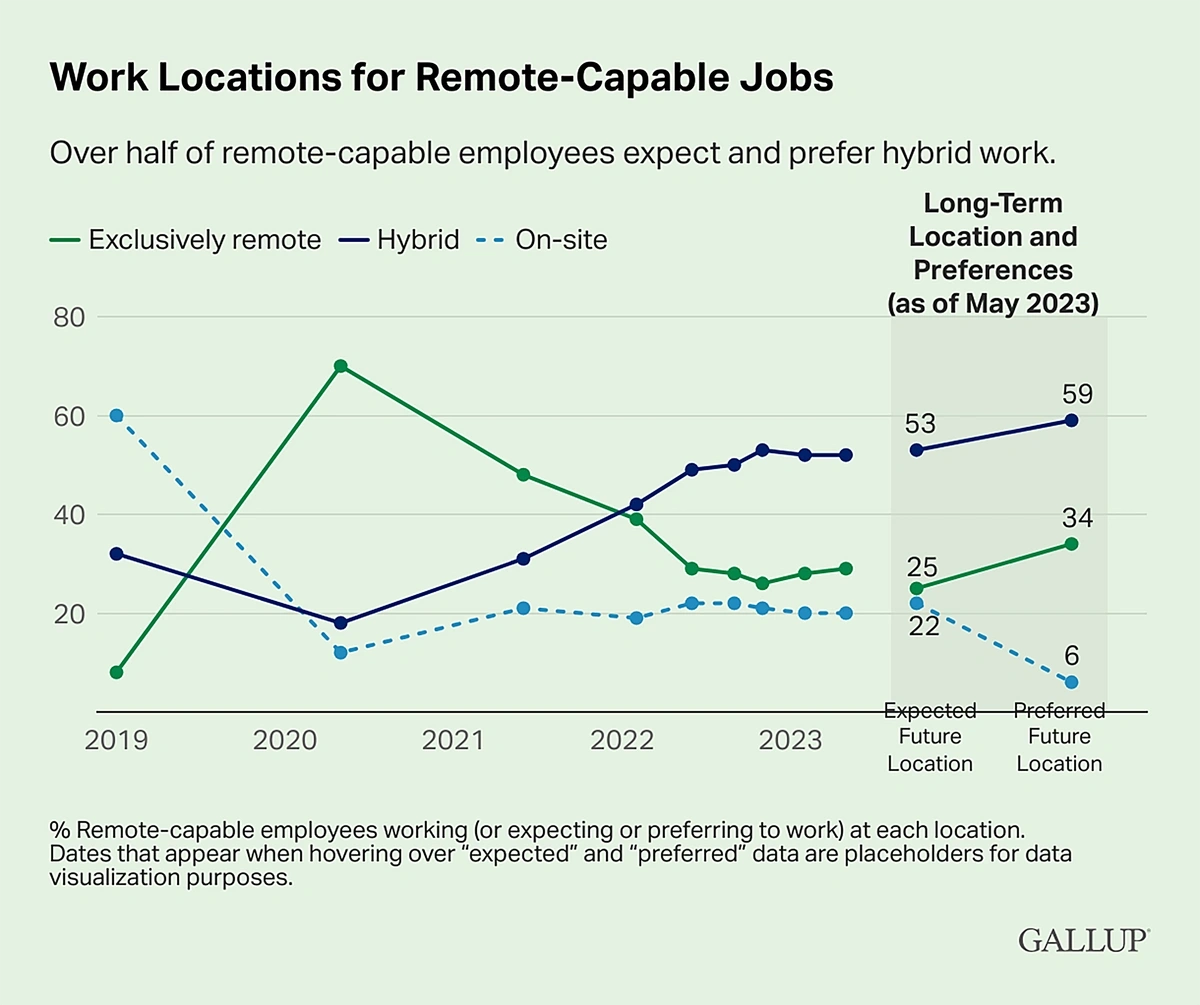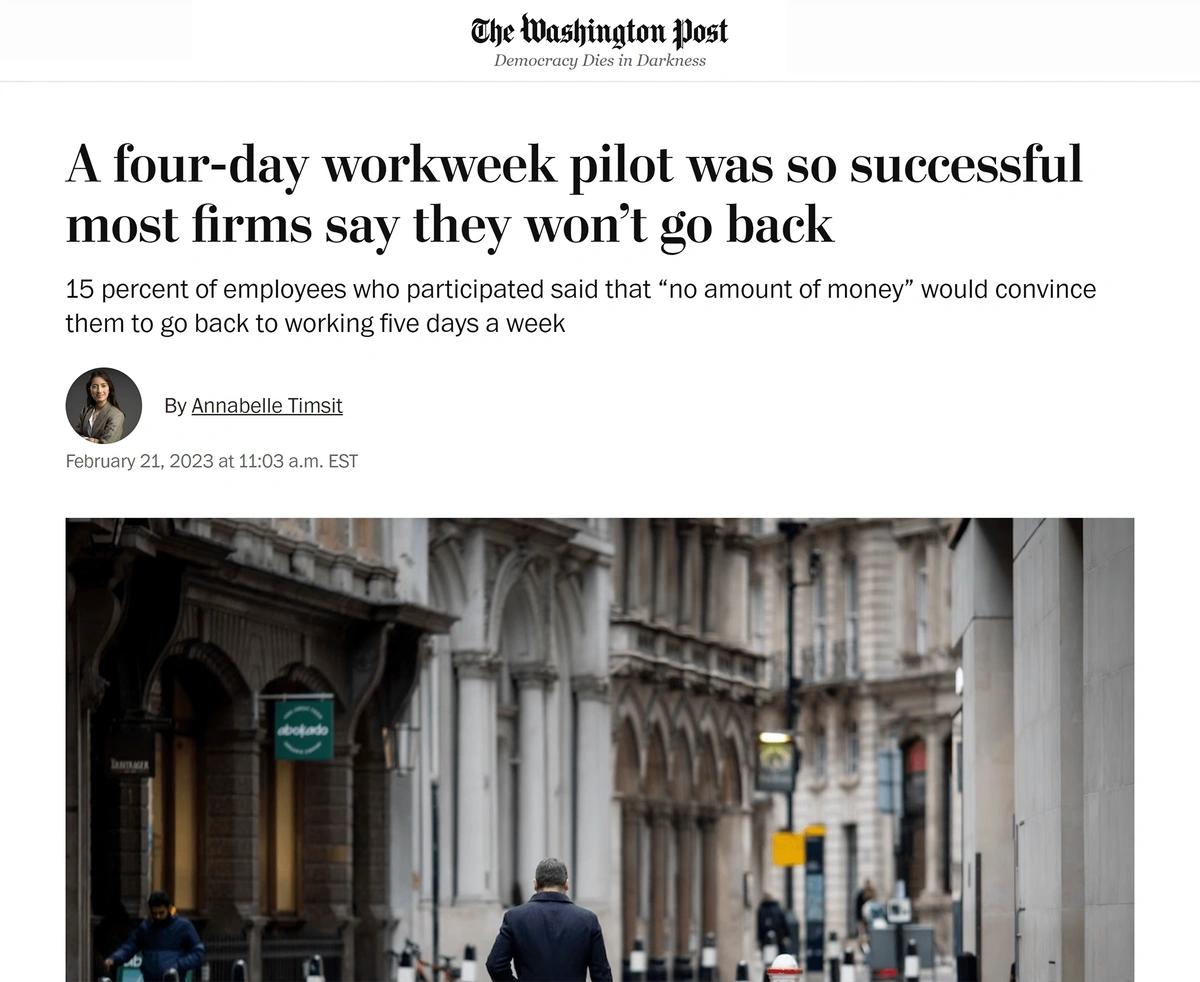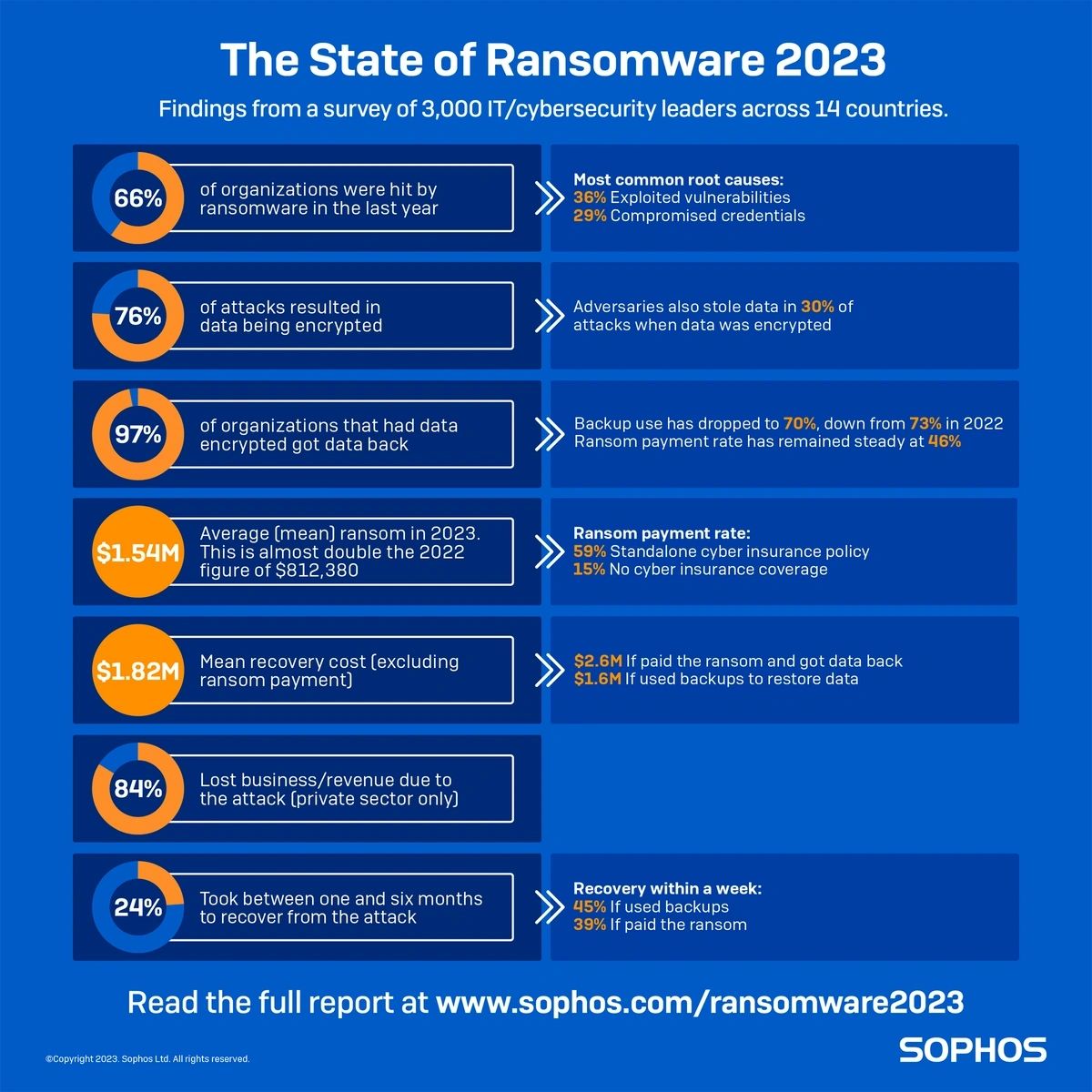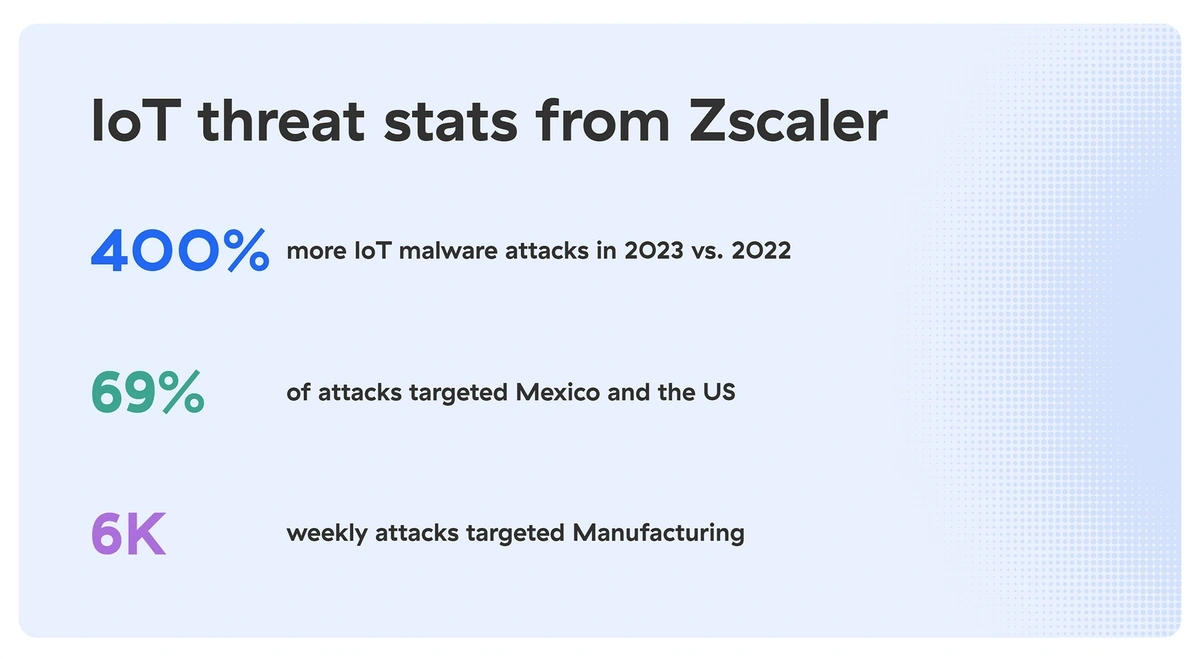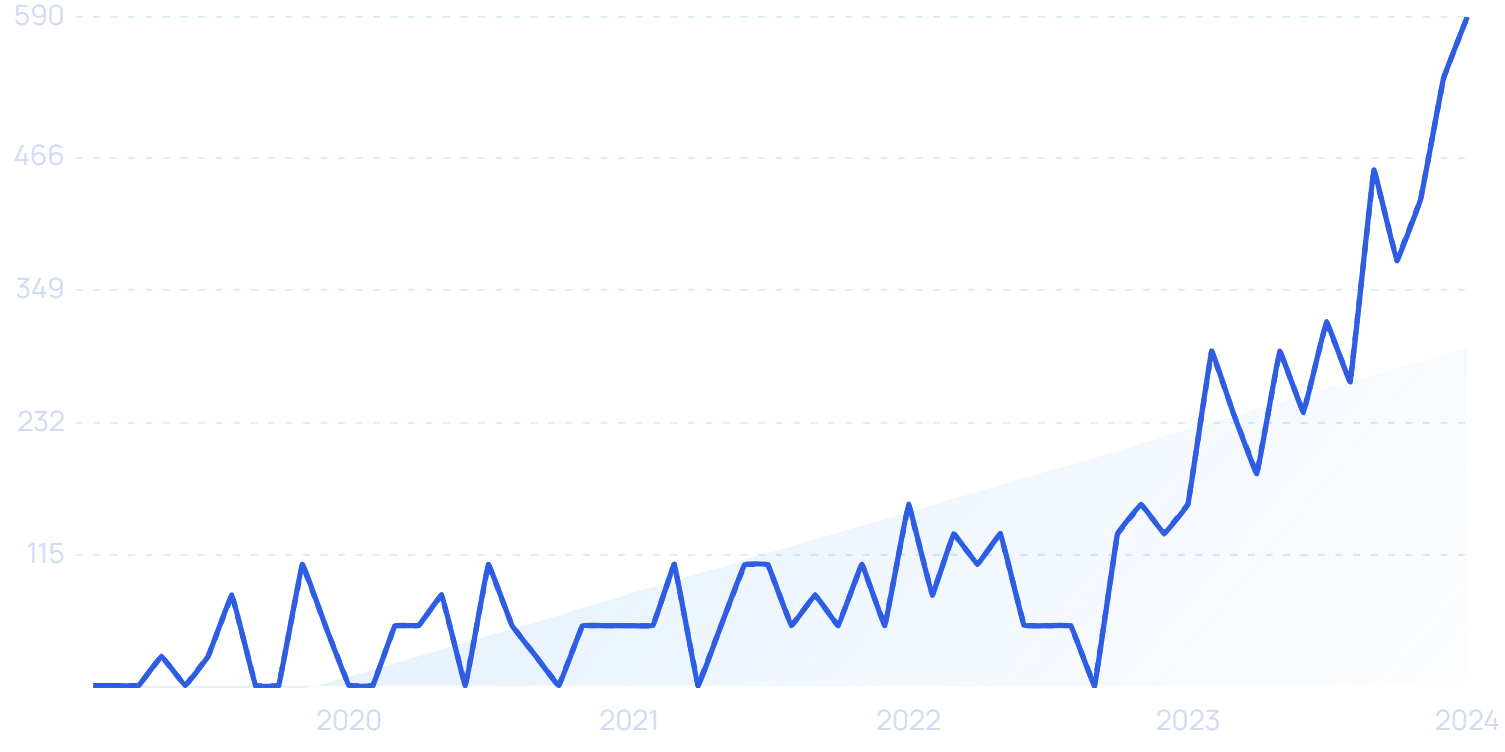
Top 7 Industry Trends (2024)
Staying on top of industry trends is a smart strategy for startups and established businesses alike.
In the face of new technology, increasing regulations, and swiftly changing consumer sentiment, staying on top of trends can keep leaders informed and agile.
We’ve been tracking the latest developments across industries in order to identify the trends that are shaping the business world right now. Keep reading to see which trends matter most for industries in 2024.
1. Generative AI Adoption Expands Across Industries
Generative AI solutions are not just being deployed in customer service applications. Enterprises are using these platforms for everything from coding to copywriting to human resources.
Search interest in “generative AI” skyrocketed in late 2022.
Analysts at Goldman Sachs say the generative AI impact across industries could be so massive that GDP could grow by 7% in the next decade.
They say up to two-thirds of all jobs could be automated with AI.
Gartner agrees with this sentiment, especially for jobs that predominantly deal with text and data.
Generative AI will be implemented in 70% of text and data tasks by 2025, they say. That’s a 60% jump from 2023.
They also predict that 90% of all businesses will be using the technology in some way by 2025.
Current deployment data shows that 16% of businesses in North America are piloting AI/ML solutions, 22% are in the roll-out phase, and 21% are already scaling up their AI operations.
More than half of global businesses are deploying AI solutions.
Many of these organizations are experimenting with off-the-shelf AI tools but others are investing in building specific generative AI solutions that serve niche use-cases.
Search volume for “custom AI” has increased by more than 1,000% in recent years.
For example, Spellbook is an AI platform geared specifically at the legal sector.
Spellbook is an AI platform that assists legal departments working with contracts.
The platform is already in use at 1,700 organizations.
In the real estate industry, there’s Centropo.
Real estate agents can feed this AI tool a link to a listing and the tool will automatically generate a video tour of the home with a voiceover.
And, in the financial sector, where McKinsey estimates generative AI could give a $340-billion bump to the industry annually, there are multiple categories for custom AI solutions.
Employee-facing chat, process automation, and personalized marketing to customers are the top categories.
Generative AI has several applications in the financial sector.
2. Big Data Spending and Expectations Increase
The number of organizations collecting and analyzing data is rapidly growing.
One survey showed just 21% of organizations said their company had established a data and analytics culture in 2023, but by 2024, that number was up to 43%.
There’s growing involvement from top executives too.
More than 50% of CIOs are planning to increase their focus on data analysis and data privacy in 2024.
For most businesses, this means pouring a large portion of the budget into data management and analytics.
In fact, according to a McKinsey analysis, a midsize organization (defined as one with operating costs totaling $5 billion) is likely to spend more than $250 million on data costs. This includes sourcing, architecture, governance, and consumption.
McKinsey’s research shows up to $120 million is spent on data architecture alone.
Overall, the data management market value is soaring.
It’s predicted to grow at a CAGR of nearly 16% and build a total value of $23.5 billion by 2026.
Data management is responsible for a large portion of enterprise budgets.
With all of this spending, business leaders are eager to realize bottom-line value from their data.
The two biggest expectations are that data will drive revenue growth and increase efficiencies in their organizations.
According to an ROI analysis by Nucleus Research, these benefits are being realized.
Their data showed data analytics technology boasts a return of $6.20 for every dollar spent and a 10% improvement in annual revenue.
However, in the face of 2.5 quintillions of data that’s created in the world each day, businesses in all industries are facing data governance challenges.
Search volume for “data governance” has grown nearly 150% in the past few years.
Two of the biggest issues to solve are deciding which users have access to data and overseeing how they use that data.
Some organizations are dedicated to data democratization—the idea that data should be accessible to users across an organization instead of just IT personnel.
Search interest in “data democratization” has grown nearly 300% since 2020.
In an effort to achieve true data democratization, businesses are training employees on data literacy and investing in data infrastructure with a single point of access to make it easier for users to find the data they need.
There are several other industry trends related to data, as well.
New AI tools, increasing data regulations, and consumers’ demands for data privacy are likely to play important roles in data management and governance in the coming months.
3. Increasing Use of Personalized Data
Personalization is increasingly used across industries to boost sales, retention and customer satisfaction.
60% of customers are willing to share their personal data in exchange for a personalized experience with the company.
This may be things like showing personalized product recommendations while customers are shopping online, texting customers coupons while they shop in-store, and providing personalized feedback on how users are utilizing a product.
Some companies are going beyond basic personalization to a strategy called hyper-personalization.
Search volume for “hyper personalization” has climbed 300% in the past five years.
Hyper-personalization utilizes real-time data and tools like AI to anticipate the customers’ future needs with high accuracy.
For example, retailers might send in-app messages at certain times of day or promote certain products based on past shopping behavior, sentiment, and interests.
This type of strategy is paying off for businesses across industries.
Personalization can raise revenue by as much as 15% and increase marketing ROI by up to 30%.
However, not every industry will benefit from personalization to the same degree.
Marketing experts say personalization is a good strategy to use with younger customers like Gen Z, but it’s not as effective with older generations like Baby Boomers.
4. Organizations Invest in New Customer Support Solutions
Enterprises are investing in new customer service opportunities as a way to keep customers happy.
Zendesk reports that 76% of businesses are increasing their investment in multi-channel customer service and 62% are implementing self-serve solutions.
Businesses are increasing their spending when it comes to customer service solutions.
As for multi-channel customer service, Zendesk says tickets submitted via WhatsApp jumped more than 200% in one year. Ticks from SMS, live chat, and social media also increased.
One of the most talked about investments in customer service is AI.
AI-powered chatbots and virtual assistants can decrease response times and address simple customer issues while freeing up human agents to tackle complex problems.
Dozens of CRM platforms are also rolling out AI bots that can connect customer data, automate tasks, write emails, and provide 24/7 customer support.
Salesforce was one of the earliest platforms to jump on this trend.
Search volume for “Salesforce AI” has jumped 900% since 2020.
The company’s latest release is called the Einstein 1 platform.
In one case study, the AI platform was used to assist agents working with customers in live chat.
Einstein automatically generated replies for customers and those responses led to an 80% close rate.
The agents working with AI were happy with its performance too—85% said it was extremely helpful.
5. Sustainability Efforts Take On New Urgency
2023 was the hottest year ever.
S&P Global reports that up to 4.4% of global GDP could be lost each year after 2050 if climate change isn’t mitigated.
Even if companies don’t feel the direct impacts of climate change, they will most likely see it amongst their supply chains and stakeholders.
For example, many enterprises rely on data centers for their IT needs. Because of their operational requirements, these structures are especially sensitive to extreme heat and water stress.
With the way global temperatures are currently rising, up to 25% of data centers are likely to face losing 10% or more of their value by 2050. By 2090, nearly all data centers will experience these financial losses.
By 2090, the impact of climate change will be felt by nearly all data centers.
One way in which industries are attempting to improve their sustainability is by emphasizing a circular economy.
As opposed to a linear economy where products are made and waste is discarded, a circular economy involves making, repairing, reusing, and recycling and all steps take place simultaneously.
A circular economy produces very minimal waste.
By 2029, Gartner predicts supply chains will be waste-free due to consumer demands and government regulations.
Using this principle, architects in Denmark have built The Circle House.
Construction of the 60-unit building utilized mostly concrete, cement, and alternative building materials like used car tires, old cork, and eelgrass.
In addition, up to 90% of the building’s materials can be disassembled at any point and reused without losing their value.
The materials used for The Circle House contribute to the overall circular economy.
As industries take steps forward, sustainability regulations and reporting are also on the minds of many leaders.
Search interest in “ESG reporting” is climbing rapidly.
The EU Corporate Sustainability Reporting Directive went into effect in 2023 prompting 50,000 businesses to comply with new reporting requirements.
In late 2023, California became the first U.S. state to create climate-related disclosure laws.
California’s requirements are slated to go into effect in 2026.
6. Businesses Attract Talent with Hybrid Work and Other Benefits
Remote work became the norm during the pandemic leaving many wondering if the workplace will ever return to “normal.” As of now, it’s still in flux.
In 2023, 28% of overall workdays in America were spent working at home.
Gallup data shows approximately half of all U.S. employees are currently employed in a job that can be performed remotely.
Of these employees, half are currently working on a hybrid schedule, 30% are working fully remotely, and 20% are working exclusively on-site.
Search volume for “hybrid work” has jumped more than 300% since 2020.
But when asked, 90% of remote-capable employees would like to have a hybrid schedule.
Just 6% of employees prefer to work fully on-site.
Another survey reported that 44% of employees would take a pay cut if it meant they would have the freedom to work remotely.
Bankrate found that 42% of employees would choose to find a different job if they were not allowed to work remotely.
The preferences of employees may become more important than ever as many industries struggle to hire and retain qualified talent.
Offering remote work is one way to attract talent, but some businesses are getting even more creative with their benefits.
The four-day work week—working 32 hours per week for 100% of a regular salary—has been gaining popularity.
In early 2022, nearly 3,000 employees took part in a trial of the four-day work week in the UK.
Although adoption rates are low right now—about 5% of all U.S. full-time employees work a four-day work week—that may change as businesses look to recruit more Gen Z and Millennial workers.
As a whole, younger generations tend to emphasize mental health and self-care. Many from these generations say a four-day work week helps them improve in both of these areas.
More than 80% of workers from Gen Z and the Millennial generation say they’d support this type of working schedule.
Companies are getting creative with other employee benefits, too. Consider these examples:
- Bank of America launched a sabbatical program in 2023. Employees who have worked with the company for 15 years can take a four-week vacation.
- Nearly 20% of organizations offer their employees pet insurance. Nearly 30% of Gen Zers want paid time off to care for a sick pet.
- 15% of employers offer mental health days.
7. Cyber Attacks Continue to Grow
In the World Economic Forum’s 2024 Global Cybersecurity Outlook, 29% of organizations said they’d been materially impacted by a cyber attack in the past year.
Ransomware continues to be one of the most expensive and devastating types of cyber attacks.
Nearly two-thirds of organizations surveyed by Sophos said they were hit by ransomware in 2023.
Sophos reports that the average ransom during an attack in 2023 was $1.54 million. That’s up from $812,000 in 2022.
Ransomware attacks cost businesses more than one million dollars.
IoT devices represent a growing vulnerability for several industries.
This is especially true for healthcare entities, municipal infrastructure systems, the transportation sector, and industrial companies.
IoT devices make up about 30% of the total number of devices on enterprise networks.
However, cybersecurity concerns are holding many industries back and preventing them from adopting more IoT solutions.
McKinsey data shows that 30% of respondents say cybersecurity is their top concern when adopting IoT capabilities.
There’s solid data to back up their fears: IoT malware attacks were up 400% in the first half of 2023.
IoT devices are a vulnerability for many industries.
Another growing concern in cybersecurity is cybercriminals’ use of AI.
Search interest in “AI cyber attack” has increased 1,050% in recent years.
AI tools are predicted to increase the volume and severity of cyberattacks over the next two years.
Criminals are using these tools to improve hacking tactics via phishing, SMS attacks, and social engineering. In particular, they’re using generative AI to make their deceptive content appear more legitimate.
Cybercriminals have already begun to use AI to generate phishing emails.
Search volume for “AI phishing” has increased more than 1,000% since 2020.
Reports show a 1,265% increase in phishing emails between 2022 and 2023. That amounts to about 31,000 phishing emails sent each day.
Industry experts say these emails are extremely convincing and sound like official correspondence from business users.
Conclusion
That wraps up our list of the top six industry trends impacting businesses right now.
The explosion of data, an increased focus on sustainable practices, and new AI tools are set to change the way industries operate. In many ways, these trends appear to be accelerating already.
Organizations that are prepared to strike a balance between technology capabilities and customer demands could see huge growth. However, threats like cyberattacks and challenges like increasing regulations could derail organizations that aren’t prepared for the future.
Stop Guessing, Start Growing 🚀
Use real-time topic data to create content that resonates and brings results.
Exploding Topics is owned by Semrush. Our mission is to provide accurate data and expert insights on emerging trends. Unless otherwise noted, this page’s content was written by either an employee or a paid contractor of Semrush Inc.
Share
Newsletter Signup
By clicking “Subscribe” you agree to Semrush Privacy Policy and consent to Semrush using your contact data for newsletter purposes
Written By


Alison is an accomplished copywriter with proven success in editing, marketing, research, and management. Before writing for E... Read more





